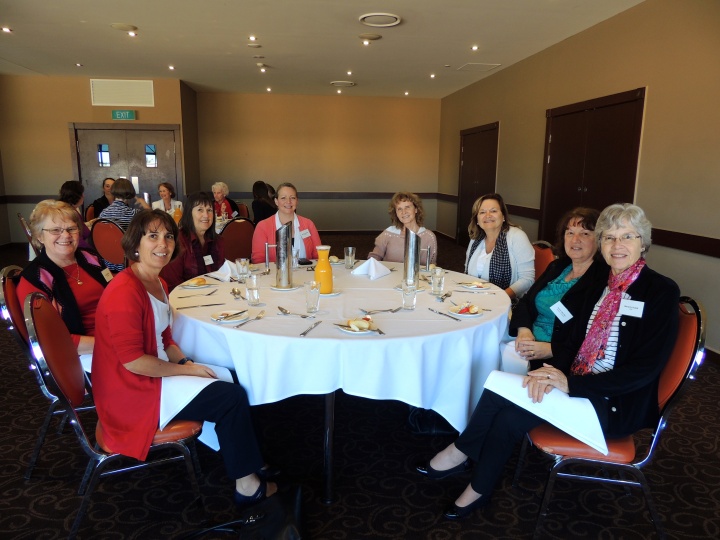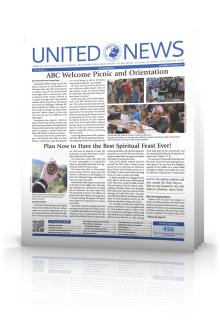National Leadership Conference in Australia

National Council chairman Doug Gray summed up the July 10-11 Australia Leadership Conference in the Gold Coast as follows:
“We believe the conference was a significant milestone in our development as we now plan how best to develop people for greater service—but more than that, to encourage and place trust in our leaders to take on and exercise the responsibilities of leadership. That is our great need as we endeavor to care for God’s people in this country.”
Well said!
Whatever technology we have for connecting ourselves electronically, nothing can replace the personal face-to-face contact we have in meetings such as this. Delegates came from all of Australia, New Zealand, Tonga and the United States.
The convocation actually began on the Sabbath, as 200 were in attendance for Sabbath services. Bob Dick and I gave relevant messages for the conference: “Attitude” and “Five Mindsets of a Servant.”
The conference began Sunday morning, and the contents of the presentations went in two directions. One emphasized character and conversion in leaders, while the other was aimed at training and skills. I started with my first lecture that was titled “The High Calling of the Ministry.” It’s a title that was intended to fit all types of service in the Church. We didn’t want this to be strictly a ministerial conference for ordained ministers, but neither did we want to be so generic about service subjects that they lost their relevance in how they applied to the future life and health of the congregation. While only a few will become ordained ministers, everyone in the room can serve and must have similar qualifications of working with people, sacrifice, hospitality and many other traits.
Bob Dick gave two side-by-side lectures about character and integrity. He explained the difference between the two and how they are vital attributes in a leader’s ability to serve effectively.
Bill Bradford spoke about doctrinal integrity and teaching just as you’ve been taught. The identity of our Church is our doctrines.
We had three presentations from our spouses: Beverly Kubik, Jenny Bradford and Dyanne Dick, on “Meaning of Help Meet,” “Appreciating One Another,” and “Words of Advice for Those Who Serve God’s People.”
Then I followed with how we plan to educate our future pastors and elders. Currently we have various programs with online training, a pastoral development program, seminars, regional conferences, the Labor in the Word program and ongoing pastoral education as well as Ambassador Bible College. From all these ways we already have of educating, we want to form a coordinated program with a faculty to provide the right tools to the right people.
We spoke about how we now, particularly in the United States, oversee smaller congregations with part-time and volunteer pastors. These ways differ from older models of one pastor over three or more churches. We have tried this for the past five years with positive results and greater effectiveness. Some of that is already being implemented in smaller Australian congregations with favorable results.
Stephen Clark gave an interactive presentation about working with teens and children and spoke about society’s challenges to family and children. Tomorrow’s leaders need to be equipped to serve our young people in the Church.
We had a few question-and-answer sessions that evoked many good questions (and answers) about tomorrow’s leaders. We spoke at length about relationships and building Church community. The focus was on creating a sense of family and interdependence in our congregations. It was also about a Church that one could become involved in. Since we are so scattered, there was discussion on how we can all be tied together more. We were all happy to be with one another and talked about how we can continue to communicate and bond. We have not had a conference of this kind in Australia in eight years.
I was very encouraged by the positive exit survey that expressed gratitude for learning how to handle specific congregational scenarios, lessons learned over the years, understanding the specific needs of the congregation, and how to meet them. Suggestions were given for future practical topics that included mental illness, marriage challenges, parent/child relations, addictions, interpersonal conflicts, unrest in congregations, dealing with conspiracy theories, young adults who have grown up in the Church but are going through “experimental years” as well as common biblical/doctrinal questions and answers.
From the outset of the conference, we stated that the purpose was to learn, socialize and share. We accomplished all three and more.
While many were involved in the planning and organization of the conference, I want to express special commendation for the dedicated work of the pastoral planning team of Doug Gray, Bill Bradford and Stephen Clark, as well as Ruth Root and Geoff Robertson for all their hours in preparation and technical support for this conference.


